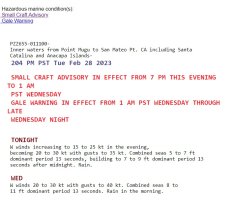This happened to my headsail in first year of ownership! I was 15 hours away on a scuba dive trip along the North Shore of Lake Superior at the time. Phone message from Harbor Master in Fish Creek alerting me to the problem. He would not (could not) board my vessel to douse the sail and urged me to get to it asap. Long sad story shortened to; my arriving on morning of 3rd day to find that some neighbor in the mooring field had boarded and brought down the tattered sail and lashed it to the deck.
In retrospect, there were at least 2 conditions existing that made the tattering tale a foregone conclusion. 1st, me, an absolute newbie with no conceivable notion that such a thing was even possible. 2nd, a damaged furler connecting rod which should have been identified by me when I had to manually roll the sail the previous weekend, when the furling line did not.
The Unfurling happened in a squall where I expect the wind just peeled her open, as the damaged furler would have offered no resistance at all.
"Its a small world". When I called the sail loft in Sturgeon Bay to ask about repairing the sail...he asked what happened..I told a short version of where and what, he said...oh you're the guy from Fish Creek, no I can't repair that sail...its to far gone...I said..but you haven't seen it yet...he said... I've heard about it tho and consider it a loss. Turns out his son also has a mooring there and he was a witness to the flogging!!
"Things happen for a reason" This educational experience prompted me to replace all rigging, both standing and running, which was on the list and long overdue at the time I purchased the boat. I also ditched the furler and converted to hank on sails. The tattered sail has been repurposed as 2 sail bags and Sis (who sews) is holding onto remainder in case I think of something else useful





